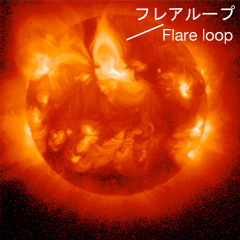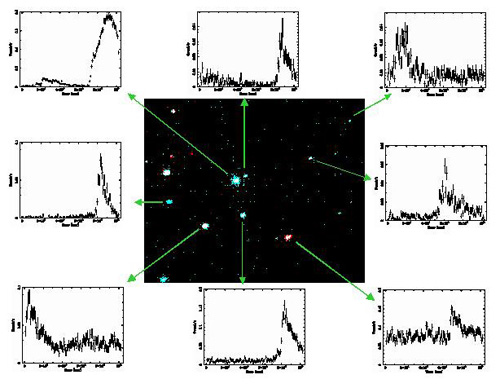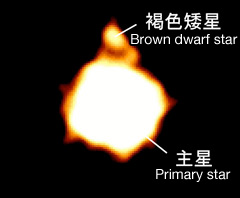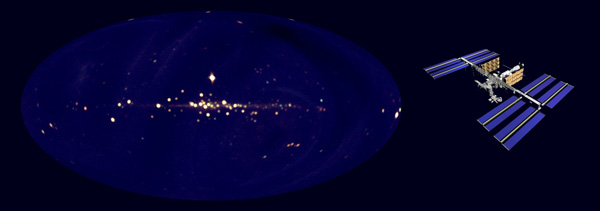Top>Research>X-ray Search for Explosion on Stars
 Index
Index

Yohko Tsuboi [Profile]
Education Course
X-ray Search for Explosion on Stars
Yohko Tsuboi
Associate Professor of High-Energy Astrophysics, Faculty of Science and Engineering, Chuo University
X-ray observations and radiography
When you hear the word X-ray, what comes to mind? No doubt it is probably "radiography". Radiography is a medical machine used for imaging the X-rays which are transmitted through human bodies. If visible light is used in the machine alternatively, the radiation is absorbed or scattered by the surface of the human bodies, and no visible ray can be transmitted. This is showing the outstanding capability for X-rays to pass through the human bodies. In X-ray observations, we are using exactly the same principle as the radiography. In the case of X-ray observations, celestial bodies are correspondent to an "X-ray generator", and dust clouds play a role in "bones" or "cancers" in our bodies. Then via X-ray observations, we can see the structures between the stars (blackholes, newtron stars, etc.) and X-ray satellite as a shadow on the X-ray photograph. However, whereas in the case of radiography the shape and position of the shadow is the most important, in many of the X-ray observations, more importance is placed on the X-ray emitting objects themselves. Via X-ray observations, we are now revealing celestial bodies which cannot be seen in visible light band because of surrounding thick layers of dust.
What can we see, when we see space in X-ray band?

Figure 1:X-ray photograph of the Sun taken by the Yohkoh satellite (courtesy of the National Astronomical Observatory, Japan / JAXA)
X-rays are radiated when high-speed electrons are suddenly stopped or curved. Also, in an atom, when electrons in higher orbitals "fall" into the lower orbital to fill the hole left behind, energy is released in the form of an X-ray photon with the energy of which is equal to the energy difference of the two orbitals involved. Since X-ray photons have extremely high energies, only the region with plenty of high energy processes can produce X-ray photons. Such region, for example, is the corona or flare loops on the Sun's surface (Figure 1). In these regions, there are gases with temperatures ranging from 1 million to 10 million degrees Celsius. The gases with such temperatures are not made of molecules, but are composed by highly ionized ions, namely plasma. In plasma, high-speed electrons are attracted toward ions and are rapidly losing speeds, and creating X-rays. In figure 1, the Sun has completely different looks to that seen in visible light band. The Sun's surface, with temperature of about 6000 degrees Celsius, has no such high-speed electrons in it, and produce mainly visible light with a spectral peak at yellow color. In this way, we can say that observing X-rays from space is to see the areas with high-energy processes.
The X-ray snapshots: the first cries of baby stars
Using the high permeability of X-ray band, since the 1990s we have attempted to peer at newborn stars deeply embedded in their cradle. Such newborn stars are called "protostars". In our Sun at the moment, hydrogen nuclear fusion occur in the center to give the Sun a stable glow, but at the protostar stage, nuclear fusion has yet to take place. What we understand through observations is only that a dust and gas exist with an extremely low temperature of -260 degrees Celsius, and that jets are ejected to great distances from the center of the dust core. Only the jets are a crew to know that the protostar exists at the center of the dust. The dust and gas surrounding the protostar is believed to be falling into the protostar at the center. Our group dared to observe this kind of low temperature dust core with the ASCA X-ray astronomy satellite. And, exceeding expectations, we continually discovered X-rays from protostars embedded deeply in dust cores. This meant that we finally gained a new tool to examine protostars, which have been impossible to gain access to in any other wavelength. The newborn star was much more tumultuous than we expected. The X-rays from protostars were suddenly brightened and then gradually dimmed. This process is very resemble to the solar flare, mentioned above. The time scale of the flares on a protostar are almost as same as those of Sun, but in terms of brightness of the flares, those of the protostars were 10 thousand to 1 million times brighter. This indicates that the volume of the flaring plasma on protostars is that much larger when compared those on the Sun. At the protostars, the length of the plasma loops is up to ten times of the radius of the Sun. The temperature of the plasma was surprisingly high; it reached 100 million degrees. In the center of the extremely low temperature dust core, a huge explosion was occurring, creating a 100 million degree giant plasma. This fact astonished the astronomical societies in the world.

Figure 2: X-ray photograph of a group of protostars in Ophiuchi dark cloud and variabilities in X-ray intensity. (Taken from the Chandra X-ray Observatory) The bluer the star, the deeper the young stellar object is embedded in cosmic dust with younger age.
Click here for related articles
http://chandra.harvard.edu/press/00_releases/press_110800.html![]()
http://www-cr.scphys.kyoto-u.ac.jp/research/xray/press200011/figures/![]()
Monitoring stellar flares from the space station
At present, we are trying to uniformly understand X-rays and flares from stars in every evolutionary stage with various masses (including planetary mass). To compare the X-ray properties of protostars with those of the other stars would give us knowledge of the fundamental physical quantities of protostars (mass, size, rotary motion parameters etc.), shining the light on the formation process of the star.

Figure 3: X-ray photograph of a brown dwarf star, a celestial body with a mass in between that of a fixed star and a planet. (Taken from the Chandra X-ray Observatory)
Click here for related articles
http://www.astro.isas.ac.jp/xjapan/news/article/2003/0414/index.html.ja![]()
http://chandra.harvard.edu/press/03_releases/press_041403.html![]()
Since 2009, we have taken part in the all-sky X-ray monitoring equipment MAXI project and have conducted unbiased surveys of flares from stars. MAXI is attached to an outboard platform on the Japanese Experimental Module Kibo at the International Space Station, and it started operation from August 2009. But in little over a year it has detected 15 flares from eight stars. These stars were divided into two categories: one is the binary composed of a fixed star and a quasi-red giant star, and another is a young star which has advanced one stage from protostars. All of them showed giant flares, in which some flares recorded largest level for flares on stars. Generally, the larger the size of the flare, the less frequently they occur. Consequently, we may be detecting the flares which have been missed to see with traditional methods where we focused our sights on a single star for a limited time.
Only a little over a year has passed since the start of observations using MAXI. If we continue to detect these giant flares one after another, in a few years we may be able to report to the world which physical properties controls the flare mechanisms. Also, I am looking forward to detecting tremendous flares from newly born protostars which are even younger than T Tauri stars with MAXI.

Figure 4:All-sky X-ray photograph taken by MAXI (left) and the International Space Station (right) Courtesy of RIKEN/JAXA/MAXI team
The area with a concentration of stars is the Milky Way
- Yohko Tsuboi
Associate Professor of High-Energy Astrophysics, Faculty of Science and Engineering, Chuo University - Born in Fukuoka Prefecture. Graduated from the Faculty of Science, Kyoto University in 1994. Completed her doctoral course in physics and astrophysics from the Graduate School of Science, Kyoto University in 1999. Spent time as an overseas research fellow for Japan Society for the Promotion of Science (University of Pennsylvania), research associate in the Department of Astronomy and Astrophysics, University of Pennsylvania, and full-time lecturer and assistant professor in the Faculty of Science and Engineering, Chuo University, before taking on her current position in 2007.
- Research Activities as a Member of Research Fellowship for Young Scientists (DC1), Japan Society for the Promotion of Science (JSPS) Shuma Tsurumi
- Important Factors for Innovation in Payment Services Nobuhiko Sugiura
- Beyond the Concepts of Fellow Citizens and Foreigners— To Achieve SDGs Goal 10 “Reduce Inequality Within and Among Countries” Rika Lee
- Diary of Struggles in Cambodia Fumie Fukuoka
- How Can We Measure Learning Ability?
—Analysis of a Competency Self-Assessment Questionnaire— Yu Saito / Yoko Neha - The Making of the Movie Kirakira Megane








